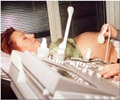Electroconvulsive therapy (ECT) helps patients with severe depression who don't respond to other treatments, and should be considered more often in the earlier stages of the illness.
Electroconvulsive therapy (ECT) helps patients with severe depression who don't respond to other treatments, and should be considered more often in the earlier stages of the illness, according to an article of the Southern Medical Journal.
"Electroconvulsive therapy has been shown to be a highly effective, safe, and even life-saving treatment for persistent and severe depression, bipolar disorder, and schizophrenia," writes Dr. Stephen Taylor of the University of Louisville. Dr. Taylor reviews the history and current use of ECT for depression and other psychiatric disorders, making the case for increased use of this research-proven therapy.The idea of inducing seizures to treat psychiatric disorders has a long history, but it wasn't until the 1950s—a time when there were few effective treatments for serious mental illness—that scientific studies confirmed the effectiveness of ECT. "The 'antipsychiatry movement' and the promise that drugs would cure mental illness contributed to a decline in ECT use in the ensuing decades," Dr. Taylor writes. Negative media depictions, as in the movie One Flew Over the Cuckoo's Nest, played a role as well.
However, "ECT has shown a strong comeback in the last decade, which is a testament to its continued efficacy and safety," according to Dr. Taylor. For patients with depression that does not improve with other drugs or treatments, ECT produces a response rate of up to 55 percent. Recent studies have reported even higher response rates—80 to 90 percent—when ECT is used as initial treatment for severe depression.
The procedure is very safe, with risks comparable to those of childbirth or minor surgery. Although concerns have been raised regarding memory loss as a side effect of ECT, this usually clears up within a few weeks. The procedure can be safely done in patients with various medical conditions, including pregnancy. Despite its effectiveness, there are still questions about how ECT works. Effects on brain neurotransmitters, such as serotonin, dopamine, and norepinephrine may be involved.
Several treatments are often needed to achieve a response to ECT—although improvement may occur after the first session, patients typically receive six to twelve treatments. Dr. Taylor emphasizes, "For all patients…it should be stressed that ECT represents a treatment that will bring remission, not a cure." Many patients will need "maintenance" treatments over time, because the effects of ECT are temporary. Treatment can be repeated if the patient's depression relapses.
The article also updates key technical issues related to the performance of ECT, including different approaches to "dosing," electrode placement, medications, anesthesia, and patient evaluation and follow-up. "Although current wisdom has relegated ECT to a last treatment option in many cases, experience and emerging research have made it clear that ECT should be offered to patients as a viable option at all stages of their illness process," Dr. Taylor concludes.
Advertisement
Source-Eurekalert
SRM/V








